Items filtered by date: March 2017
How Orthotics Help Your Feet
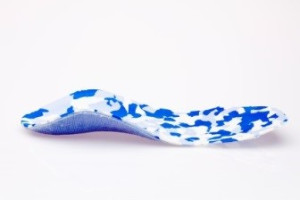 Your feet have the potential to impact nearly every part of your body. If there is a problem with them, the effects can range from minor to extremely serious. Orthotics can solve some of the most common issues you may have with you feet. Overpronation is when the foot leans inward, causing an uneven distribution of weight as you walk. Underpronation is just the opposite. This occurs when your foot leans to the outside. Improper distribution of weight results here as well. Both of these conditions can be improved by wearing properly fitted orthotics. The orthotics promote alignment by supporting the arch, absorbing shock, and essentially controlling how the foot hits the ground.
Your feet have the potential to impact nearly every part of your body. If there is a problem with them, the effects can range from minor to extremely serious. Orthotics can solve some of the most common issues you may have with you feet. Overpronation is when the foot leans inward, causing an uneven distribution of weight as you walk. Underpronation is just the opposite. This occurs when your foot leans to the outside. Improper distribution of weight results here as well. Both of these conditions can be improved by wearing properly fitted orthotics. The orthotics promote alignment by supporting the arch, absorbing shock, and essentially controlling how the foot hits the ground.
If you are having discomfort in your feet and would like to try orthotics, contact one of our podiatrists from William Street Podiatry. Our doctors can provide the care you need to keep you pain-free and on your feet.
What Are Orthotics?
Orthotics are inserts you can place into your shoes to help with a variety of foot problems such as flat feet or foot pain. Orthotics provide relief and comfort for minor foot and heel pain but can’t correct serious biomechanical problems in your feet.
Over-the-Counter Inserts
Orthotics come in a wide variety of over-the-counter inserts that are used to treat foot pain, heel pain, and minor problems. For example, arch supports can be inserted into your shoes to help correct overarched or flat feet, while gel insoles are often used because they provide comfort and relief from foot and heel pain by alleviating pressure.
Prescription Orthotics
If over-the-counter inserts don’t work for you or if you have a more severe foot concern, it is possible to have your podiatrist prescribe custom orthotics. These high-quality inserts are designed to treat problems such as abnormal motion, plantar fasciitis, and severe forms of heel pain. They can even be used to help patients suffering from diabetes by treating foot ulcers and painful calluses and are usually molded to your feet individually, which allows them to provide full support and comfort.
If you are experiencing minor to severe foot or heel pain, it’s recommended to speak with your podiatrist about the possibilities of using orthotics. A podiatrist can determine which type of orthotic is right for you and allow you to take the first steps towards being pain-free.
If you have any questions please contact one of our offices located in William Street in New York, NY, Forest Hills, NY, and Broadway in New York, NY . We offer the newest diagnostic and treatment technologies for all your foot and ankle needs.
Taking Care of Your Feet on Vacation
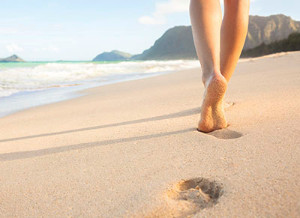 Traveling can be exciting, but nothing can ruin a trip like foot pain. And that’s not all that you need to watch out for when jet setting. Sitting in a small airplane seat, especially on a long flight, can lead to cramping and discomfort. In order to avoid this, try to walk the aisles as much as you can and stretch frequently. Drinking plenty of water and doing your best to avoid alcohol is also a good tip to avoid the aches and pains of a flight. When you land, there’s a good chance that you’ll be doing some walking. Be sure to wear comfortable shoes to avoid blisters and swelling. Remember, you can’t take a vacation from your feet.
Traveling can be exciting, but nothing can ruin a trip like foot pain. And that’s not all that you need to watch out for when jet setting. Sitting in a small airplane seat, especially on a long flight, can lead to cramping and discomfort. In order to avoid this, try to walk the aisles as much as you can and stretch frequently. Drinking plenty of water and doing your best to avoid alcohol is also a good tip to avoid the aches and pains of a flight. When you land, there’s a good chance that you’ll be doing some walking. Be sure to wear comfortable shoes to avoid blisters and swelling. Remember, you can’t take a vacation from your feet.
Everyday foot care is very important to prevent infection and other foot ailments. If you need your feet checked, contact one of our podiatrists from William Street Podiatry. Our doctors can provide the care you need to keep you pain-free and on your feet.
Everyday Foot Care
Often, people take care of their bodies, face and hair more so than they do for their feet. But the feet are a very important aspect of our bodies, and one that we should pay more attention to. Without our feet, we would not be able to perform most daily tasks.
It is best to check your feet regularly to make sure there are no new bruises or cuts that you may not have noticed before. For dry feet, moisturizer can easily be a remedy and can be applied as often as necessary to the affected areas. Wearing shoes that fit well can also help you maintain good foot health, as well as making it easier to walk and do daily activities without the stress or pain of ill-fitting shoes, high heels, or even flip flops. Wearing clean socks with closed shoes is important to ensure that sweat and bacteria do not accumulate within the shoe. Clean socks help to prevent Athlete’s foot, fungi problems, bad odors, and can absorb sweat.
If you have any questions please feel free to contact one of our offices located in William Street in New York, NY, Forest Hills, NY, and Broadway in New York, NY . We offer the newest diagnostic and treatment technologies for all your foot and ankle needs.
High Heels a Constant Pain
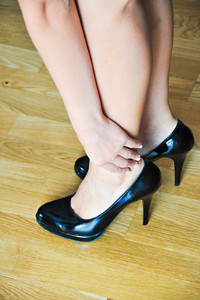 High heels are a constant source of foot problems for women of all ages. Though many feel they need to make sacrifices to look fashionable, the high heel can do real damage. Wearing of heels over time can cause pain in joints and tendons, and can even mishape your foot. Bunions and calluses can form as well. Women overwhelming suffer more from bunions than men due to wearing of high heels. Interestingly, the only global populations where the incidence of bunions is relatively equal between the sexes is in countries where people are mainly barefoot. For people who work on their feet a lot, it would be best to consider limiting the time spent in high heels.
High heels are a constant source of foot problems for women of all ages. Though many feel they need to make sacrifices to look fashionable, the high heel can do real damage. Wearing of heels over time can cause pain in joints and tendons, and can even mishape your foot. Bunions and calluses can form as well. Women overwhelming suffer more from bunions than men due to wearing of high heels. Interestingly, the only global populations where the incidence of bunions is relatively equal between the sexes is in countries where people are mainly barefoot. For people who work on their feet a lot, it would be best to consider limiting the time spent in high heels.
High heels have a history of causing foot and ankle problems. If you have any concerns about your feet or ankles, contact one of our podiatrists from William Street Podiatry. Our doctors can provide the care you need to keep you pain-free and on your feet.
Effects of High Heels on the Feet
High heels are popular shoes among women because of their many styles and societal appeal. Despite this, high heels can still cause many health problems if worn too frequently.
Which Parts of My Body Will Be Affected by High Heels?
- Ankle Joints
- Achilles Tendon – May shorten and stiffen with prolonged wear
- Balls of the Feet
- Knees – Heels cause the knees to bend constantly, creating stress on them
- Back – They decrease the spine’s ability to absorb shock, which may lead to back pain. The vertebrae of the lower back may compress.
What Kinds of Foot Problems Can Develop from Wearing High Heels?
- Corns
- Calluses
- Hammertoe
- Bunions
- Morton’s Neuroma
- Plantar Fasciitis
How Can I Still Wear High Heels and Maintain Foot Health?
If you want to wear high heeled shoes, make sure that you are not wearing them every day, as this will help prevent long term physical problems. Try wearing thicker heels as opposed to stilettos to distribute weight more evenly across the feet. Always make sure you are wearing the proper shoes for the right occasion, such as sneakers for exercising. If you walk to work, try carrying your heels with you and changing into them once you arrive at work. Adding inserts to your heels can help cushion your feet and absorb shock. Full foot inserts or metatarsal pads are available.
If you have any questions please feel free to contact one of our offices located in William Street in New York, NY, Forest Hills, NY, and Broadway in New York, NY . We offer the newest diagnostic and treatment technologies for all your foot and ankle needs.
Perils of Ingrown Toenails
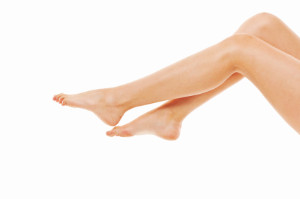 If you have ever experienced an ingrown toenail, you know how painful and how much of a hindrance it can be. It occurs when part of the toenail grows into the tissue of the toe. This can turn into a serious condition, as swelling and infection may result. Medically known as onychocryptosis, this disorder is typically caused by over clipping of toenails or wearing shoes that do not fit properly. With nearly 3 million cases of patients with ingrown toenails, it is important to contact your podiatrist to learn about proper treatment.
If you have ever experienced an ingrown toenail, you know how painful and how much of a hindrance it can be. It occurs when part of the toenail grows into the tissue of the toe. This can turn into a serious condition, as swelling and infection may result. Medically known as onychocryptosis, this disorder is typically caused by over clipping of toenails or wearing shoes that do not fit properly. With nearly 3 million cases of patients with ingrown toenails, it is important to contact your podiatrist to learn about proper treatment.
Ingrown toenails can become painful if they are not treated properly. For more information about ingrown toenails, contact one of our podiatrists of William Street Podiatry. Our doctors can provide the care you need to keep you pain-free and on your feet.
Ingrown Toenails
Ingrown toenails occur when a toenail grows sideways into the bed of the nail, causing pain, swelling, and possibly infection.
Causes
- Bacterial infections
- Improper nail cutting such as cutting it too short or not straight across
- Trauma to the toe, such as stubbing, which causes the nail to grow back irregularly
- Ill-fitting shoes that bunch the toes too close together
- Genetic predisposition
Prevention
Because ingrown toenails are not something found outside of shoe-wearing cultures, going barefoot as often as possible will decrease the likeliness of developing ingrown toenails. Wearing proper fitting shoes and using proper cutting techniques will also help decrease your risk of developing ingrown toenails.
Treatment
Ingrown toenails are a very treatable foot condition. In minor cases, soaking the affected area in salt or antibacterial soaps will not only help with the ingrown nail itself, but also help prevent any infections from occurring. In more severe cases, surgery is an option. In either case, speaking to your podiatrist about this condition will help you get a better understanding of specific treatment options that are right for you.
If you have any questions please feel free to contact one of our offices located in William Street in New York, NY, Forest Hills, NY, and Broadway in New York, NY . We offer the newest diagnostic and treatment technologies for all your foot and ankle needs.
Understanding Turf Toe
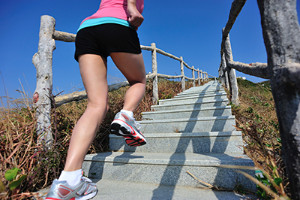 One common injury often experienced when running is turf toe, also known as “an acute, traumatic bursitis of the first toe-metatarsal joint associated with tendonitis,” attributed to playing on artificial turf. Typically during normal running an athlete would be able to dig his or her big toe into the ground to propel forward. But on artificial turf, the big toe is displaced during the digging motion. This imbalance results from an abnormal pronation, or inward rolling, of the foot. Understanding the risk of injury that results from playing on artificial turf is important for prevention. Orthotics that aid in balancing the feet can also decrease the risk of injury.
One common injury often experienced when running is turf toe, also known as “an acute, traumatic bursitis of the first toe-metatarsal joint associated with tendonitis,” attributed to playing on artificial turf. Typically during normal running an athlete would be able to dig his or her big toe into the ground to propel forward. But on artificial turf, the big toe is displaced during the digging motion. This imbalance results from an abnormal pronation, or inward rolling, of the foot. Understanding the risk of injury that results from playing on artificial turf is important for prevention. Orthotics that aid in balancing the feet can also decrease the risk of injury.
Exercising your feet regularly with the proper foot wear is a great way to prevent injuries. If you have any concerns about your feet, contact one of our podiatrists of William Street Podiatry. Our doctors will treat your foot and ankle needs.
How to Prevent Running Injuries
Many common running injuries are caused by overuse and overtraining. When the back of the kneecap starts wearing out and starts causing pain in your knee, this is commonly referred to as runner’s knee. Runner’s knee is a decrease in strength in your quadriceps and can occur if you’re not wearing properly fitted or supporting shoes. To prevent runner’s knee, focusing on hip strengthening is a good idea, as well as strengthening your quads to keep the kneecaps aligned.
What Are Some Causes of Running Injuries?
- One cause of a common running injury is called iliotibial band syndrome.
- Plantar fasciitis is also another common injury.
- Stress fractures can occur from overtraining, lack of calcium, or even your running style.
Best Ways to Prevent Running Injuries
- Wear footwear that fits properly and suits your running needs.
- Running shoes are the only protective gear that runners have to safeguard them from injury.
- Make a training schedule. Adding strengthening exercises as well as regular stretching can help keep you strong and limber and can lessen the possibility of injuries.
- Stretching keeps muscles limber; this will help you gain better flexibility.
If you have any questions please feel free to contact one of our offices located in William Street in New York, NY, Forest Hills, NY, and Broadway in New York, NY . We offer the newest diagnostic and treatment technologies for all your foot and ankle needs.
New Shoes May Cause Blisters
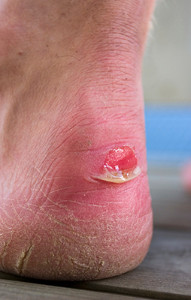 There is no shortage of annoying health problems in the world. Whether it be a mild cough or a case of the hiccups that seems to never go away, there is probably some sort of remedy available. Foot blisters are one of these such annoyances. They seem to be most common after buying a new pair of shoes. If the shoes are too small, or just don’t fit your foot in the right way, you might have blisters in your near future. If your feet rub against the shoe too much, a blister will likely form. If this happens, make sure to treat the affected area with antibiotic ointment, and cover it with a bandage. If the condition persists, it may be time to go shoe shopping again.
There is no shortage of annoying health problems in the world. Whether it be a mild cough or a case of the hiccups that seems to never go away, there is probably some sort of remedy available. Foot blisters are one of these such annoyances. They seem to be most common after buying a new pair of shoes. If the shoes are too small, or just don’t fit your foot in the right way, you might have blisters in your near future. If your feet rub against the shoe too much, a blister will likely form. If this happens, make sure to treat the affected area with antibiotic ointment, and cover it with a bandage. If the condition persists, it may be time to go shoe shopping again.
Blisters are prone to making everyday activities extremely uncomfortable. If your feet are hurting, contact one of our podiatrists of William Street Podiatry. Our doctors can provide the care you need to keep you pain-free and on your feet.
Foot Blisters
Foot blisters develop as a result of constantly wearing tight or ill-fitting footwear. This happens due to the constant rubbing from the shoe, which can often lead to pain.
What Are Foot Blisters?
A foot blister is a small fluid-filled pocket that forms on the upper-most layer of the skin. Blisters are filled with clear fluid and can lead to blood drainage or pus if the area becomes infected.
How Do Blisters Form?
Blisters on the feet are often the result of constant friction of skin and material, usually by shoe rubbing. Walking in sandals, boots, or shoes that don’t fit properly for long periods of time can result in a blister. Having consistent foot moisture and humidity can easily lead to blister formation.
Prevention & Treatment
It is important to properly care for the affected area in order to prevent infection and ease the pain. Do not lance the blister and use a Band-Aid to provide pain relief. Also, be sure to keep your feet dry and wear proper fitting shoes. If you see blood or pus in a blister, seek assistance from a podiatrist.
If you have any questions, please feel free to contact one of our offices located in William Street in New York, NY, Forest Hills, NY, and Broadway in New York, NY . We offer the newest diagnostic and treatment technologies for all your foot care needs.
Causes of Heel Pain
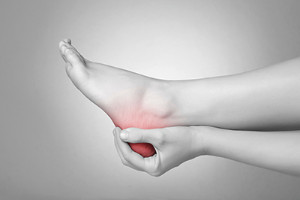 Heel pain is a condition that plagues many people, and chronic cases can be especially difficult to endure. For many common cases of chronic heel pain, plantar fasciitis is the underlying culprit; plantar fasciitis affects all types of people, though most commonly active men between the ages of 40 and 70. Plantar fasciitis pain manifests in various ways. For some people, it can be described as dull; in other cases, people feel it as a sharp pain, a burning sensation, or an ache that extends outward from the heel. There are various factors that can contribute to plantar fasciitis. To determine the cause of your heel pain and the best way to treat it, consult with your podiatrist.
Heel pain is a condition that plagues many people, and chronic cases can be especially difficult to endure. For many common cases of chronic heel pain, plantar fasciitis is the underlying culprit; plantar fasciitis affects all types of people, though most commonly active men between the ages of 40 and 70. Plantar fasciitis pain manifests in various ways. For some people, it can be described as dull; in other cases, people feel it as a sharp pain, a burning sensation, or an ache that extends outward from the heel. There are various factors that can contribute to plantar fasciitis. To determine the cause of your heel pain and the best way to treat it, consult with your podiatrist.
Many people suffer from bouts of heel pain. For more information, contact one of our podiatrists of William Street Podiatry. Our doctors can provide the care you need to keep you pain-free and on your feet.
Causes of Heel Pain
Heel pain is often associated with plantar fasciitis. The plantar fascia is a band of tissues that extends along the bottom of the foot. A rip or tear in this ligament can cause inflammation of the tissue.
Achilles tendonitis is another cause of heel pain. Inflammation of the Achilles tendon will cause pain from fractures and muscle tearing. Lack of flexibility is also another symptom.
Heel spurs are another cause of pain. When the tissues of the plantar fascia undergo a great deal of stress, it can lead to ligament separation from the heel bone, causing heel spurs.
Why Might Heel Pain Occur?
- Wearing ill-fitting shoes
- Wearing non-supportive shoes
- Weight change
- Excessive running
Treatments
Heel pain should be treated as soon as possible for immediate results. Keeping your feet in a stress-free environment will help. If you suffer from Achilles tendonitis or plantar fasciitis, applying ice will reduce the swelling. Stretching before an exercise like running will help the muscles. Using all these tips will help make heel pain a condition of the past.
If you have any questions please contact one of our offices located in William Street in New York, NY, Forest Hills, NY, and Broadway in New York, NY . We offer the newest diagnostic and treatment technologies for all your foot and ankle needs.

